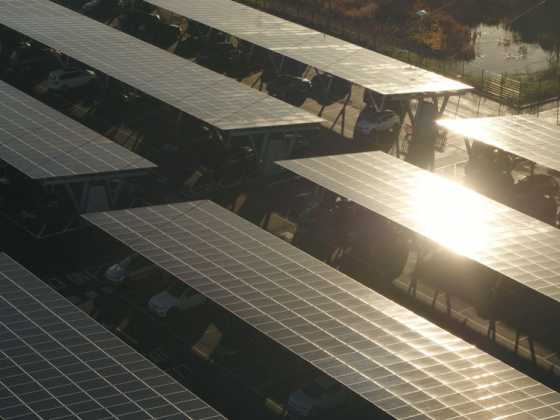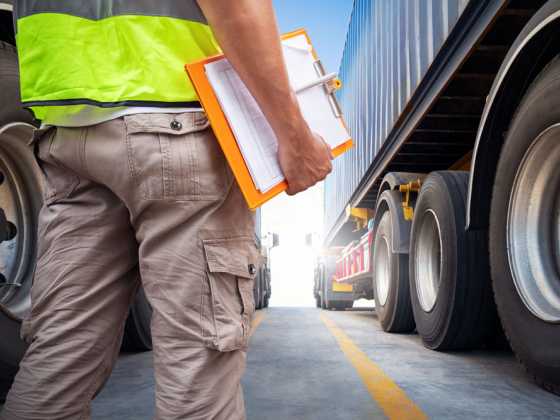Get the most out of your EVs: top five tips
Introducing ultra-low emission vehicles (ULEVs) into a business fleet, no matter how few, is an impressive step for any organisation. However, it is important to note that the journey should not end there. Energy Saving Trust (EST) advise that organisations consider the following when implementing ULEVs into the fleet
1. Infrastructure to charge your vehicles
A common reason for under utilisation of electric vehicles within a fleet is a lack of charging infrastructure to support them. It sounds simple but ensuring charging infrastructure is in place at the point of ULEVs being deployed into the fleet will build staff confidence in the vehicles and reduce any underlying range anxiety they may have.
If you have multiple work sites and vehicles often travel back and forth, consider installing charge points at each site to allow top-up charges throughout the day. For plug-in hybrid electric vehicles, remember to keep these charged daily to maximise electric miles, minimise petrol consumption and ensure your costs are kept low.
EST offer grant funding for workplaces in Scotland to install charging infrastructure, and for staff who drive a ULEV as their designated company vehicle – contact us to learn more. Ensure staff are also aware of the Electric Vehicle Home Charge Scheme from OLEV.
2. Implement a travel policy
Create and implement a clear travel policy prioritising the use of ULEVs over petrol and diesel counterparts, endorsed by the senior management team. Ensure this is effectively communicated to all existing staff and is included in new staff inductions.
To further reduce costs and minimise petrol/diesel vehicle use, EST recommend travel policies are built around a low carbon travel hierarchy. Low carbon travel hierarchies should prioritise active travel i.e. walking, cycling and public transport, followed by ULEVs and pool cars. Staff should be discouraged from using their own grey fleet unless there are no alternative options. EST can offer further advice on how to successfully implement a travel hierarchy within your travel policy, speak with a member of our team at your convenience.
3. Arrange staff familiarisation training
Familiarising staff with ULEVs before booking for work trips will build confidence and improve their overall experience when driving. Familiarisation training can vary depending on the staff member’s experience, from how to operate the vehicle, to using public charge points, through to driving ULEVs efficiently and making the most of the regenerative braking. For some, even the thought of driving an automatic for the first time can be daunting. Once some staff are comfortable using the organisation’s ULEVs they could champion the vehicles and provide inductions to their colleagues.
Speed has a larger impact on EV range compared to conventional vehicles, so it is important staff are aware of this in advance to plan their journeys effectively. Learning driving techniques to maximise regenerative braking will not only improve driver safety but will further demonstrate the efficiency of these vehicles compared to petrol/diesel equivalents. Try introducing friendly competition by tracking the kWh/mi of each journey to incentivise efficient driving. For businesses in England, EST offers subsidised ULEV training through the Ecodriving programme (see details below).
4. Fully charge your vehicles when electricity is cheapest
The time of day that ULEVs are charged can have a huge impact on the cost savings achieved. Your organisation will likely be billed for electricity consumption across set time bands or half hourly which means paying higher tariffs during peak demand. The cost of electricity is at its lowest overnight when demand is low. Fully charging your vehicles overnight and avoiding peak energy times as often as possible will increase your cost savings and help ensure your vehicles are powered by cleaner energy.
5. Combine with on-site renewables and battery storage
On-site renewable electricity systems i.e. solar photovoltaics (PV) and wind turbines, can not only save your organisation money, but can further support the decarbonisation of your fleet by generating clean electricity. Sunlight and wind provide free fuel. Once the technology is in place you will see reductions in electricity costs and a reduction in your organisation’s carbon footprint. For example, a 4kWp solar PV system can generate around 4,200kWh annually in London or 3,200kWh annually in Scotland – that’s the same amount of electricity required to drive a 41kWh Renault Zoe around 12,600 miles in London, or 10,000 miles in Scotland.
You may have the roof space to install a system significantly larger than 4kWp, which is typically more cost-effective in the long run. While your vehicle is on the road, the green electricity generated by your renewable systems will either power your building or go back into the grid. However, if you wish to store this energy a battery storage system allows you to capture this clean energy and save it for a time that is useful i.e. charging your vehicle during peak electricity demand.
For inspiration and information on what renewable systems you can install, check out the Green Network for Businesses delivered by the Energy Saving Trust in partnership with Resource Efficient Scotland at https://greennetwork.resourceefficientscotland.com//
Further support
For businesses in England, Energy Saving Trust offer a range of support funded by Department for Transport (DfT):
• Free fleet support and fleet reviews are available, email fleetadvice@est.org.uk for more information.
• Subsidised ecodriving training for electric and conventional fleet vehicles. Email ecodriving@est.org.uk for more information.
For businesses in Scotland, Energy Saving Trust offer a range of support funded by Transport Scotland:
• 50% grant funding for workplace charge points (non-public) or £300 top-up grant funding for domestic charge points. Grant funding for publicly accessible charge points is now available. Email electricvehiclesscotland@est.org.uk for more information.
• Free sustainable transport reviews analyse your existing fleet, highlight prime vehicle candidates for ULEV deployment, and show the potential cost and CO2 savings that could be achieved through a range of recommendations. Email sustainabletransport@est.org.uk for further details.
• Up to £120,000 interest-free loan funding for the purchase of ULEVs and low carbon transport measures, and up to £30,000 interest-free loan funding for the purchase of ebikes and ecargo bikes. Full details from sustainabletransport@est.org.uk.






